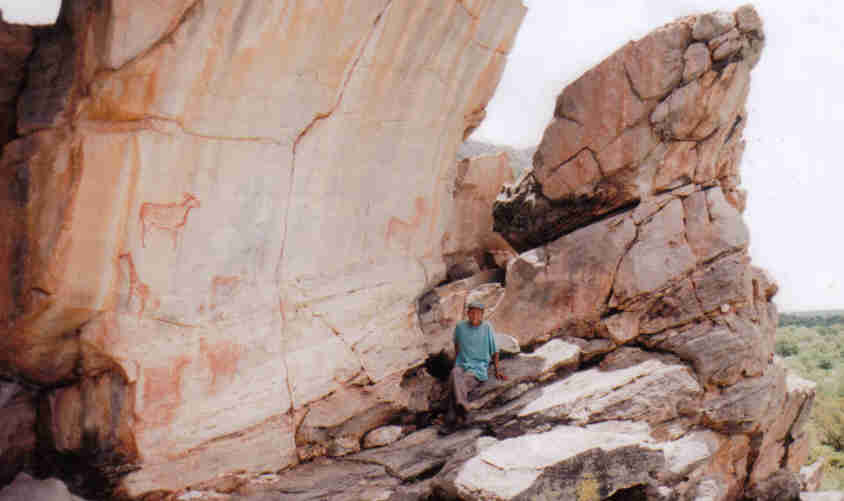Tsodilo Hills
 Botswana's artistic culture has flourished from time immemorial. The Kalahari is rich in the remains of tools and artefacts made thousands of years ago, as early as the Stone Age. The Tsodilo hills are covered with San paintings. The artistic tradition lives on in basketwork, pottery, weaving and art that flourishes today in many parts of the country.
Botswana's artistic culture has flourished from time immemorial. The Kalahari is rich in the remains of tools and artefacts made thousands of years ago, as early as the Stone Age. The Tsodilo hills are covered with San paintings. The artistic tradition lives on in basketwork, pottery, weaving and art that flourishes today in many parts of the country.
The word Tsodilo is derived from teh Hambukushu word sorile, meanting 'sheer'. Rising out of the flat Kalahari terrain like a volcanic island in a calm sea, Tsodilo Hills dominate their surroundings completely. The hills are rocky outcrops of mecaceous quartzite schist know as Inselbergs, formed a relatively recent 450 million years ago.
The hills are the subject of many myths and legends. To the !Kung San they are the bith place of man, the tomb of the gods and the home of the serpent monster. The Tsodilo group comprises four indivudual hills, the largest of which is known by the San as the Male hill. Approximately one kilometre beyond this is a conglomeration of smaller outcrops which are collectively known as the Female hill (approx. 250 metres high) and further away is the Child. The fourth and smallest hill is not named.
San paintings: There are over 3500 individual rock paintings in more than 350 sites at Tsodilo Hills. The exact age of the paintings is not known for sure. The most recent may be only 100 years old, although when a geologist visited the hills in 1898, none of the inhabitants knew the origin of the paintings. Most of the rock paintings are to be found on the Female hill and many can be seen without too much climbing.







